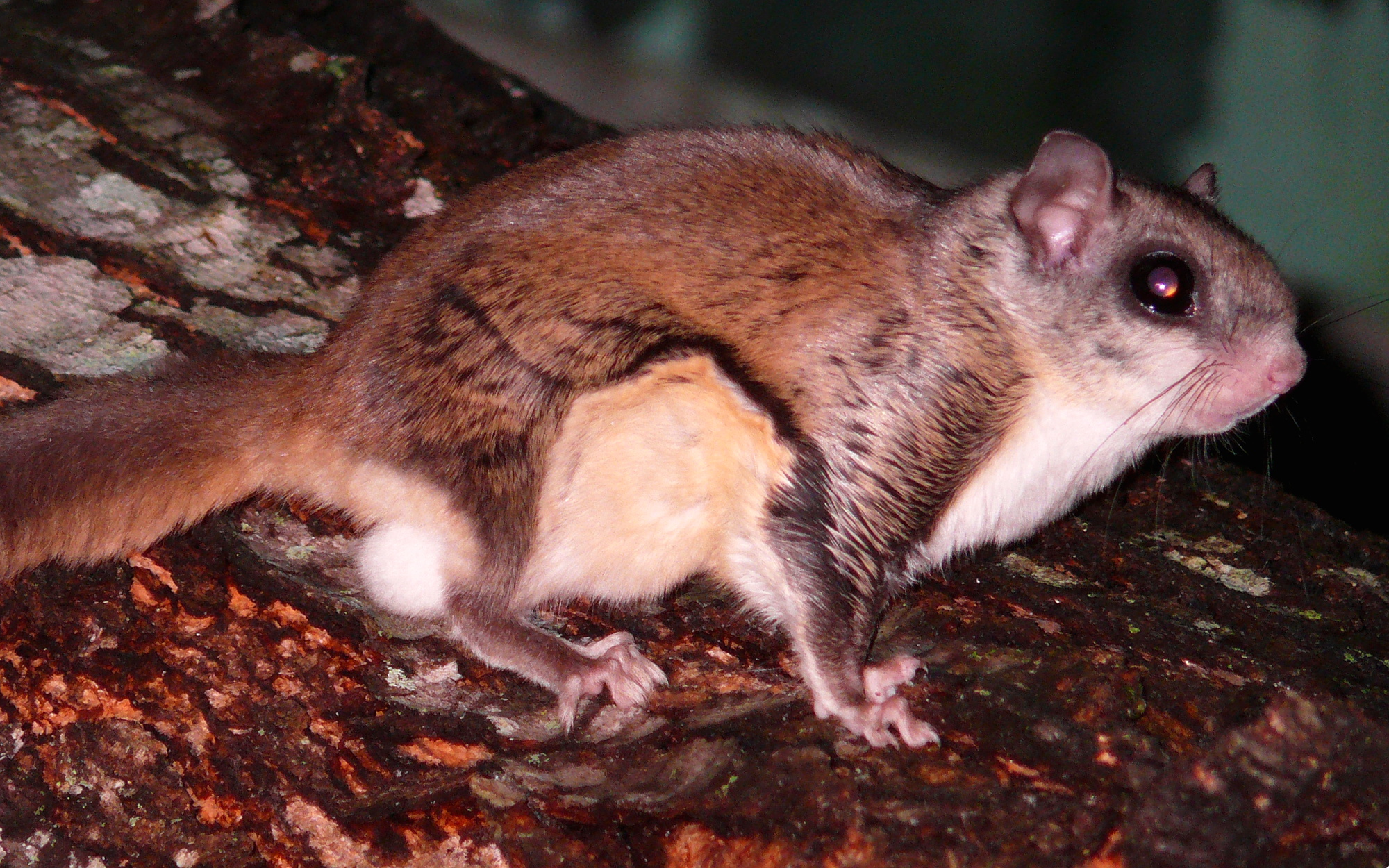
Call Now For Help With Flying Squirrels
Flying Squirrels
Description
Technically, flying squirrels glide from one location to another. They have a patagium, which is a specialized membrane that stretches from their wrists to their ankles. This membrane acts like a parachute as they jump from an elevated position. Flying squirrels determine the direction of their glide by manipulating their long limbs. They also have long tails that stabilize them as they glide. Gliding is a useful adaptation for these creatures. For example, it helps them move from one tree to another effortlessly, as they forage for food. Other squirrels have to climb down a tree and then proceed to another one to achieve the same result.
Species
Flying squirrels originated 20 million years ago from a common ancestor according to scientific researchers. Today, more than 50 species of these animals exist worldwide. The most common species in the US are the southern and the northern flying squirrels. Their scientific names are Glaucomys volans and Glaucomys sabrinus respectively. The southern flying squirrel is common in the eastern half of the United States while the northern one is widespread in Alaska, Washington, Oregon, Utah, and North Carolina. Subtle differences exist between these two species. For example, the northern flying squirrel has a larger size than its southern counterpart does. Unfortunately, the number of northern flying squirrels is reducing rapidly. In fact, these squirrels are state-endangered species in the State of Pennsylvania.
Habitat and Predators
Southern flying squirrels live in deciduous or mixed forests in North America. They are also common in residential areas that are close to heavily wooded areas. They also travel great distances. More specifically, the average range for this species is 2.45 hectares. Males can have a range that is as large as 9.0 hectares. In contrast, northern flying squirrels prefer coniferous trees. Their average home range stands at 3 to 7 hectares in North Carolina and 5 to 13 hectares in Pennsylvania. Common predators of flying squirrels are the domestic cat, owls, weasels, martens, coyotes, and hawks. These creatures respond to such predators by foraging for food at night. They also have a high level of agility that helps them escape their predators. Unfortunately, human encroachment on forested areas is interfering with their rates of survival.
Reproduction and Diet
Flying squirrels mate in February and March. The females take up the responsibility of looking after their offspring. Woodpecker holes and natural cavities are some of the ideal places that female flying squirrels use as nesting grounds. These mothers protect and nurture their babies until the young ones are ready to leave the nest. Usually, flying squirrels leave their mother’s nest two and a half months after birth. The mother’s home range increases by 70% soon after the young ones leave the nest. In terms of food, flying squirrels eat fruits, fungi, nuts, and bird eggs. Other sources of nourishment for these squirrels include tree sap, insects, mushrooms, and lichens. Flying squirrels are adept at storing food. Cavities in trees provide the perfect storage ground for these animals.
Damages
In some cases, flying squirrels find their way into the attic or within the walls of your home. They gain entrance to these places through broken windows, gaps in siding, or cracks in your wall. They can cause damage to these areas. For example, they can destroy insulation material to construct nests. They can chew on electrical wiring. Worst still, they can gnaw at the structural support systems of your roof or wall. Moreover, flying squirrels empty bird feeders regularly because they can gain easy access to them by gliding to where they are from an elevated position. Another problem they cause is unbearable odor produced by their feces, urine and nesting materials. Consequently, having flying squirrels in your home or compound is problematic for you and your family members.
Flying Squirrel Removal
Our team of professionals are experts at removing flying squirrels and can help you with your problem. Call us today, and we will deal with this problem in the shortest time possible. We handle this issue quickly because we know what to examine. For example, we can identify hiding areas for these creatures. Additionally, we have an adequate level of experience that helps us when it comes to handling flying squirrels. We will help you get rid of them, and then we will advise you appropriately on preventing them from returning to your home. Call us today for the best services in this industry.
